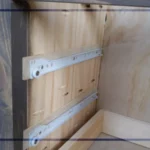How Long Between Coats Of Polyurethane – Explained!
If you are a woodworking enthusiast, you’ve probably encountered the dilemma of knowing how long to wait between applying coats of polyurethane. The timing of each application is critical to achieving a flawless finish that enhances the beauty and longevity of your wood projects.
So, how long between coats of polyurethane? On average, you should allow at least 24 hours between coats. However, remember that this timeframe can vary depending on several factors, such as temperature, humidity, the type of wood, the type of polyurethane, etc.
This comprehensive guide will discuss in detail the factors that influence polyurethane drying times. We will also discuss effective methods to speed up the drying process. Continue reading to learn this and more related topics!
How Long Between Coats of Polyurethane? Factors That Affect The Drying Time
It usually takes around 24 hours to dry the coat. However, you can effectively quicken this time by considering these factors.
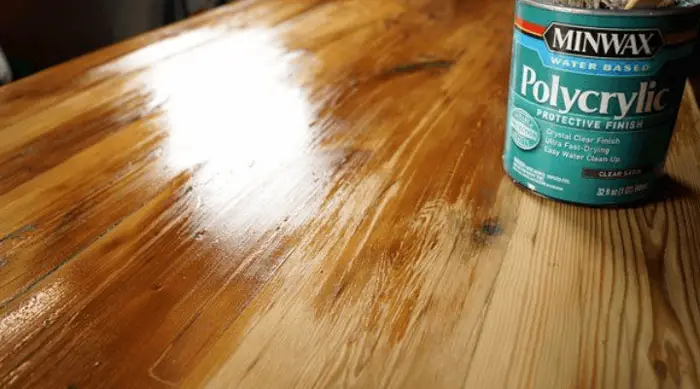
1. Temperature and Humidity
- The polyurethane tends to dry up faster when working in warmer and drier conditions.
- Conversely, it takes longer for the polyurethane to cure properly in colder and more humid environments.
Hence, always make sure to work in a controlled environment with temperatures around 70°F (21°C) and humidity levels between 40%-50% to promote quicker drying.
2. Type of Wood Used
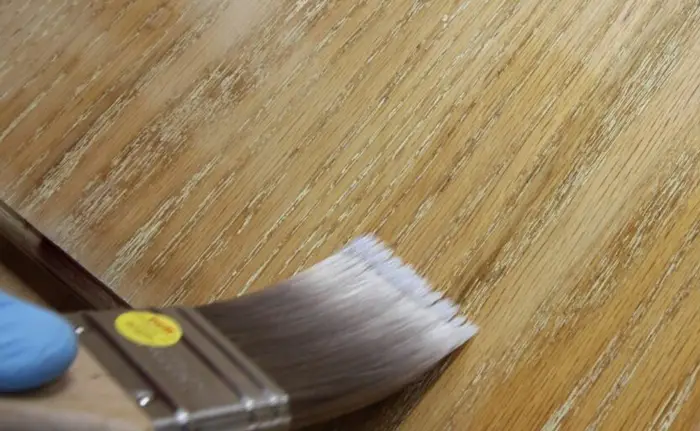
Softwoods such as pine and cedar have an open-grain structure. This characteristic frequently results in these woods absorbing more of the finish.
- Softwoods, however, dry faster but require several coats of polyurethane to achieve the desired shine.
- Hardwoods, on the other hand, absorb less of the finish. As a result, hardwoods generally require fewer coats of polyurethane to achieve a high shine.
Tip: To tackle the issue of excessive absorption, I often use thinned polyurethane as a sealer.
3. Type of Polyurethane

Polyurethane comes in different formulations, such as water-based, oil-based, and hybrid versions.
- Water-based polyurethane generally dries faster than oil-based polyurethane. A water-based polyurethane coat takes approximately two to three hours to dry.
- And the time for oil-based polyurethane is around 4-6 hours for one coat to dry.
- Note that fast-drying polyurethane products are more expensive compared to standard formulations.
- Another critical factor to consider is that some fast-drying polyurethanes have a maximum recoat time. In other words, a second coat must be applied within a specific time frame to achieve proper bonding with the first coat.
To avoid any problems, carefully read the manufacturer’s instructions on the label.
4. Brand of Polyurethane
Not all polyurethane products are created equal. Some brands may have additives or specific formulations that can impact the drying time.
- For example, Minwax Helmsman Spar Urethane may take up to 10 hours to dry, while Rust-Oleum Varathane can dry in just one hour.
- Always read the manufacturer’s instructions to know what to expect.
5. Presence of Previous Varnish or Wood Stains
Any existing varnish, stain, or finish on the wood surface can affect the adhesion and drying time of the new polyurethane coats.
So, to ensure a proper drying process, sand or remove any previous layers before applying polyurethane.

6. Different Sheens Have Different Drying Times
I’ve noticed that satin finishes dry faster than high-gloss finishes due to differences in their chemical compositions. However, the differences in drying time are minor and sometimes negligible.
7. Amount of Poly Applied
Thicker coats take longer to dry compared to thinner ones. Applying overly thick coats can lead to uneven drying, increasing the risk of surface imperfections.
Therefore, it is recommended to apply thin, even coats of polyurethane, allowing each coat to dry fully before applying the next one. This approach speeds up the overall drying process and ensures a smoother and more consistent finish.
8. Tools Used
For instance, a brush tends to pick up more polyurethane, leading to a thicker coat, which takes longer to dry. In contrast, a roller applies a thinner layer and quickens the drying time.
How Can You Fasten The Drying Process?
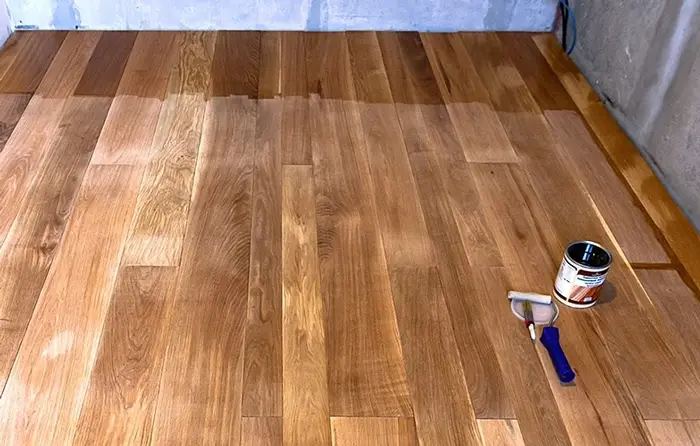
Here are several strategies to speed up the process without compromising the final result:
- Ideal environment: Ensure you work in a well-ventilated area with controlled temperature and humidity. Another tip is choosing to work on a sunny day.
- Water-based polyurethane: When time is of the essence, opt for water-based polyurethane products. Water-based variants tend to dry faster than oil-based alternatives.
- Thin coats: Applying thin and even coats of polyurethane is a key technique to speed up drying. Thinner layers dry faster than thick ones because there is less material to evaporate.
- Paint thinner: Paint thinners contain solvents that help the polyurethane evaporate more quickly. However, it’s crucial to exercise caution and use this method sparingly.
- Cleaning your workspace: Dust, debris, and other impurities can mar the finish and interfere with the polyurethane’s ability to cure properly. To avoid these issues, use a tack cloth slightly dampened with water or mineral spirits to remove any dust or contaminants.
- Use a blow dry or a space heater: Ensure you do not directly blow the warm air onto the targeted surface. Blow Dries can be utilized for small projects, while space heaters are for extensive surfaces such as floors.
What Happens If You Apply A Coat Of Polyurethane Too Soon?
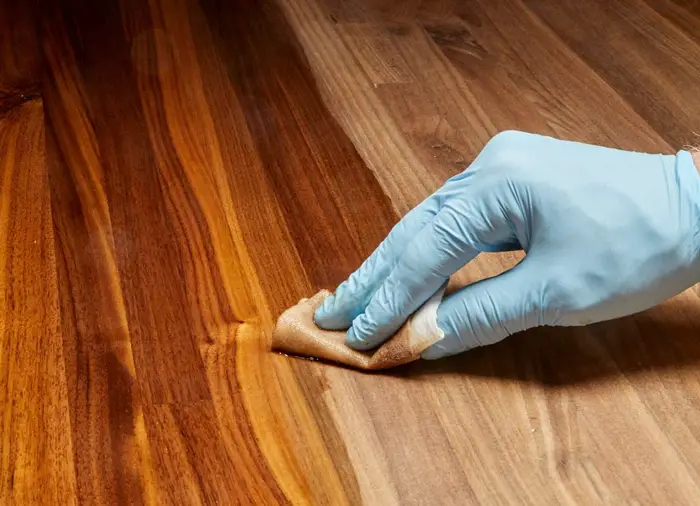
Here’s what can happen if you rush the process and apply a coat too soon:
1. Results in a Rougher Surface
When you apply a new coat of polyurethane before the previous one has fully cured, the solvents in the fresh coat can react with the partially cured layer underneath. This can cause the surface to become tacky or gummy, resulting in a rough texture once the finish dries completely.
2. The Next Coat Won’t Cure Well
If you apply polyurethane too soon, the underlying layer may not have fully dried or hardened. As a result, the next coat will not adhere properly to the previous one, resulting in poor inter-coat adhesion.
This lack of adhesion can cause the layers to separate or peel over time, compromising the finish’s durability and longevity.
3. Cloudiness and a Weak Finish
Rushing the drying process can lead to a phenomenon known as “blushing” or “clouding.” When polyurethane dries too quickly, trapped moisture or solvents can cause a hazy or cloudy appearance on the surface.
4. Uneven Appearance
Brush or roller marks from the previous coat may have failed to level out and blend seamlessly with the new coat. As a result, the finish may appear streaky and detract from the project’s overall aesthetics.
Is It Mandatory To Sand In Between Poly Coats And Why?
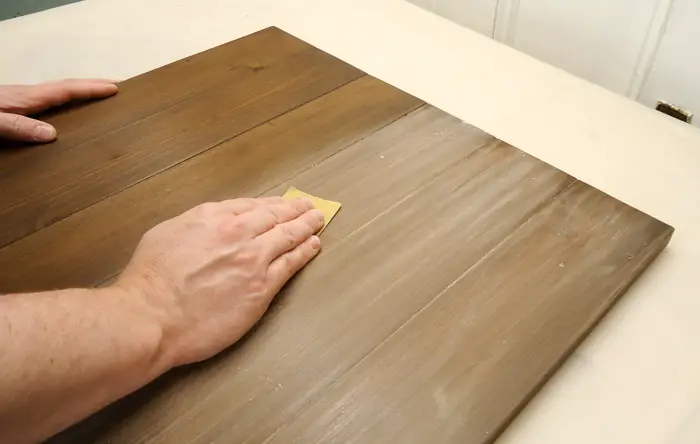
Yes, it is mandatory. Here is why.
- Promotes adhesion: Sanding between coats creates a slightly roughened surface, which helps the subsequent coat of polyurethane adhere better to the previous one.
- Removes imperfections: Sanding helps to eliminate imperfections that may have occurred during the previous application of polyurethane. Dust particles, small bubbles, brush marks, or drips can be smoothed out during the sanding process.
- Enhances finish quality: A well-leveled surface creates a more consistent appearance, free of visible blemishes or inconsistencies.
- Allows for better stain penetration: If you intend to apply a stain before the final coat of polyurethane, sanding between coats becomes even more important. The sanding opens the wood’s pores, allowing for better stain penetration and a more even color result.
FAQs
Do you want to know a little more? Have your eyes on this section.
Q1. What is the difference between curing and drying?
Drying is the initial stage when the solvents in the polyurethane evaporate, leaving behind a solid film. During this phase, the polyurethane undergoes physical changes, becoming touch-dry and safe to handle.
Curing is the time it takes for a polyurethane finish to become completely hardened and ready for day-to-day wear. This takes a more extended period than drying.
Q2. How do I know if the previous coat of polyurethane is fully dried?
Lightly touch an inconspicuous area of the finish with your fingertip. If it feels dry and doesn’t leave a fingerprint, it’s likely dried.
Q3. How do I care for finished surfaces?
- Avoid water and liquids and wipe up spills immediately
- Use gentle cleaning methods with a soft, damp cloth or mild soap
- Protect from heat and sunlight
- Use protective pads and mats for heavy objects
- Reapply the finish every three to five years to maintain the surface’s beauty and protection
Conclusion
It is critical to understand that recoating polyurethane at the wrong time can compromise its durability. Furthermore, the ideal recoat time varies depending on a number of factors. Remember to let the first coat dry completely before applying the second.
Failure to do so can result in undesirable outcomes such as a rougher surface, the formation of bubbles, and a weaker finish. Sanding is also necessary to achieve a smooth surface and ensure proper chemical bonding and adhesion between coats. Considering these factors, you can achieve a beautiful, long-lasting polyurethane finish.

